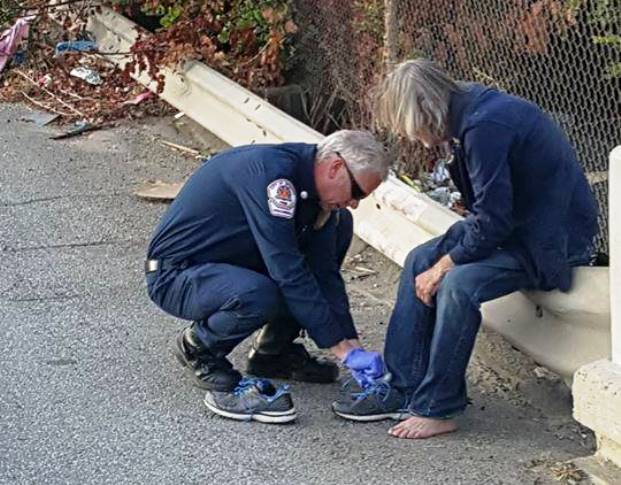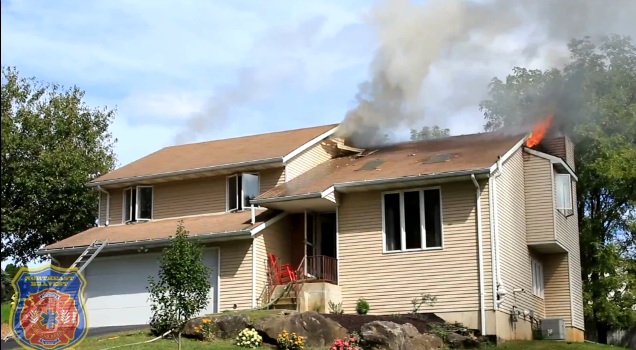Delayed fire & EMS dispatch & miscommunication confirmed during Metro train separation in MD
15 minutes lost before correct dispatch to November Glenmont incident

Looking for a quality used fire truck? Selling one? Visit our sponsor Command Fire Apparatus
STATter911 confirms it took more than 15 minutes before Montgomery County 911 sent the appropriate fire and EMS units after a Metro train separated in Glenmont last month. Information provided by spokespersons, along with radio traffic, illustrate miscommunications resulting in fire and EMS dispatched initially for a medical emergency instead of a train that became uncoupled, stranding passengers. The timeline also shows Montgomery County’s Emergency Communications Center (ECC) lost six of those minutes while processing the initial erroneous report of someone needing medical help at the Glenmont Metro Station.
While Metro believes it’s initial call to ECC could have been clearer, there’s no detailed explanation from Montgomery County or Metro for the long delay or the misinformation initially given to firefighters. In fact, Montgomery County and Metro have provided different accounts of the initial phone call between Metro and ECC. It’s likely an investigation by the Washington Metrorail Safety Commission (WMSC) will eventually provide clarity and an explanation for the delays.
Communications between Metro and 911 centers have long resulted in dangerous confusion and delay during rail emergencies. Official investigations and previous STATter911 reports have shown serious issues both at Metro’s Rail Operations Control Center (ROCC) and 911 facilities. After a 2015 deadly fire near the L’Enfant Plaza Metro Station, the National Transportation Safety Board pointed to delays and confusion at ROCC and DC’s 911 center. More than 20 minutes were lost before DC Fire & EMS was correctly dispatched to the incident. During the delay, passenger Carol Glover died and scores of others suffered smoke inhalation.
“Emergency, emergency, emergency!”
What makes the miscommunications more puzzling is that initial radio reports by Metro workers to a ROCC controller were extremely clear on what occurred near Glenmont on November 24. Time-stamped radio traffic recorded by OpenMHz.com (above) shows at 1:02:22 pm, the operator of Train 109 reported a brake problem. Within 15 seconds another Metro worker, identified as Unit 4, declared an emergency and reported that Train 109 had a “pull apart”.
While there was a lack of clarity of the precise location of Train 109 — using what Metro calls chain markers — Unit 4 relayed clearly that the “pull apart” occurred on Track 2 leaving Glenmont.
“No medical at this time”
Radio traffic moments later (above) shows the controller gave Metro workers on the scene permission to go into the track bed. The controller asked for the workers to make sure hand brakes were applied to all cars and check on the passengers inside both portions of the uncoupled train. By 1:09:30 pm Metro’s ROCC had confirmed from the scene that no passengers had medical problems.
Spokespersons for both Metro and Montgomery County confirm at a little past 1:06 pm — approximately four-minutes after the train separation was discovered by Metro — the first call was made by ROCC to ECC. Metro and Montgomery County each confirm the initial request by ROCC was for “medics” to come to Glenmont. Here’s how the Metro spokesperson described the conversation:
The ROCC specialist describes a “train incident” that “may be a pull-apart,” and that “the train may have separated.” The ROCC employee explains that information was still coming in, i.e. that the situation was still being assessed. (Specifically: ”The train may be separated but I’m not quite sure, I still have information coming to me.”)
Trouble breathing call at Glenmont
Montgomery County says the initial call was for someone with trouble breathing on the platform at Glenmont. The Montgomery County spokesperson confirms that at 1:12:53 pm — approximately six minutes after the call from ROCC — a ladder truck and two EMS units were dispatched (recording above) to Glenmont for the trouble breathing call (Open MHz shows the time at 1:13:26 pm). So far, Montgomery County has not explained why they had wrong information about the type of call or why it took more than six minutes to dispatch what they believed to be a high priority call requiring paramedics.
For its part, Metro believes preliminarily that “the information relayed during the initial call needed to be clearer, such that it resulted in an appropriate Fire/Rescue response.” Metro says it will take appropriate “action to address any deficiencies” on its end.
Metro’s second call
Metro says ROCC made a second call to ECC at 1:08:40 pm — now more than six minutes after the incident occurred — specifically asking for fire units to respond to Glenmont. Montgomery County did not provide the time of the second call, but agrees ROCC called back with more information. Based on Metro’s time of the second call, it took at least another six-minutes — now 1:15:17 pm — before ECC relayed that information to firefighters and medics responding to the reported trouble breathing call at Glenmont (recording above).
In its update to responding units, ECC said Metro is reporting injuries from the incident. The source of that information is unclear. Metro’s radio traffic does not indicate injuries. Also, minutes later, the fire department liaison stationed at ROCC provided a detailed update to responding units and did not mention anyone was hurt
Finally, the correct response
Radio traffic (above) shows it wasn’t until 1:18:05 pm — more than 15 minutes after the train separated — that the correct assignment of fire and EMS units was dispatched by Montgomery County’s 911 center.
In the end, there were no injuries or anyone with trouble breathing. Fire and EMS units from Montgomery County worked closely with Metro to remove passengers from the two portions of the train and led them to safety through the Glenmont Metro Station. Radio traffic from Montgomery County indicates some initial concern with three passengers believed to be inebriated.
Why does this keep happening?
For more than a year, Metro’s ROCC has been the focus of investigations and news reports. WMSC ordered significant changes to reduce miscommunications and delays. Metro responded with a reorganization of ROCC leadership and other changes. The preliminary information provided by Metro about the Glenmont incident shows it’s still a work in progress.
As for Montgomery County 911, this isn’t the first time it has taken many minutes for ECC to dispatch fire and EMS to a rail emergency. In February, STATter911 reported on three Metro incidents where officials confirmed dispatching of fire and EMS took “longer than we would like.”
A Montgomery County spokesperson has said on multiple occasions these calls can take longer to dispatch because of a protocol requiring ECC to get more detailed information from ROCC in order to pinpoint the location. Still, six-minutes for the initial dispatch, another six-minutes before updated information is relayed to responding units and a total of nine-minutes for the upgraded dispatch is excessive.
The more than 20-minutes lost in the deadly L’Enfant Plaza Metro fire almost six-years-ago should be a reminder to all that these seconds and minutes wasted can be crucial for the people trapped in a Metro tunnel. This time the lost 15-minutes likely didn’t impact the outcome. But what about next time?





